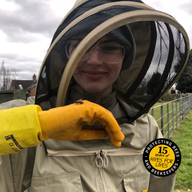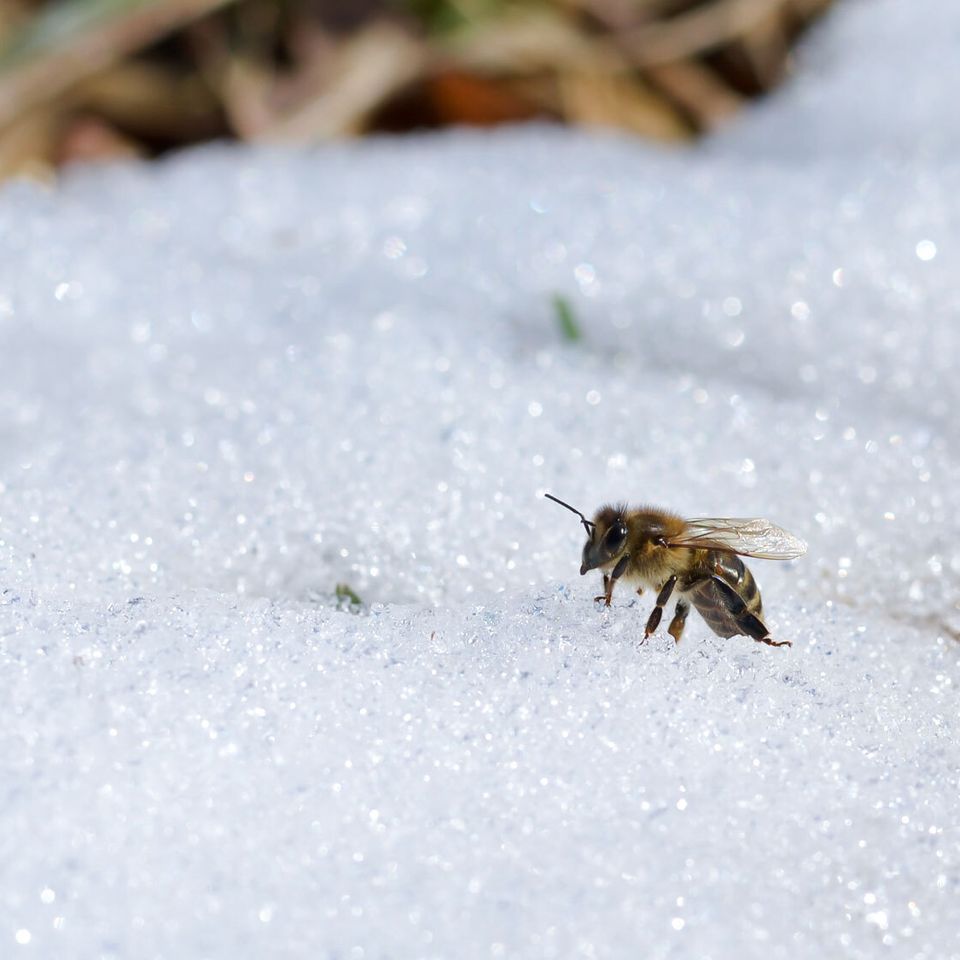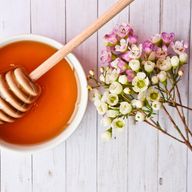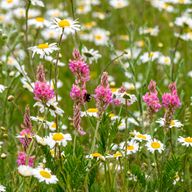
The Great British summer is a hive of activity for the natural world. Trees full of bright green leaves and blossoms, hedge rows of colourful wildflowers, and the familiar buzz of wildlife – we’re surrounded by the beautiful wonders of nature.
Then comes the winter. Daylight hours get shorter, the temperature drops, and leaves start to fall from the trees. In winter, most of us retreat into the comfort and cosiness of our own homes and snuggle under a blanket with a steaming cup of hot cocoa. But what happens to our incredible wildlife during this time?
Every species has a different way of surviving the colder months. Some migrate to warmer climates, others hibernate, and some have even evolved to withstand the chilly weather. Many people however might be surprised to hear what our honey bee friends get up to from November onwards…
Buzzing to educate more people about the wonders of honey and continue our Hives for Lives mission to protect the bees and improve livelihoods through beekeeping, we have answered all your questions on how the honey-makers survive the winter.
Where do honey bees go in winter?
Honey bees in the UK don’t migrate to find warmer weather like other winged animals, they prefer to stay close to home just like we do! In fact, honey bees rarely leave the hive during the winter months.
Rather than foraging for delicious nectar and pollen as they do in summer, our miniature heroes only venture outside for ‘cleansing’ flights on warmer days, which involves ‘going to the toilet’ and occasionally finding water.
How do honey bees keep warm in winter?
Although they’re scarcely seen out and about, honey bees are actually still busy inside the hive during the winter months, where they ‘cluster’ to keep warm as they really hate cold, damp conditions.
A ‘cluster’ is like one giant bee hug, made up of worker bees, all flapping their wings and moving in and out to create and conserve heat. Sounds cosy, right? Her Royal Hive-ness the queen bee is generally found at the centre of the cluster, spreading pheromones to keep her colony happy.
Despite the tough conditions in the cooler months though, honey bees actually live longer during winter due to the fact they’re safe and secure in the hive and use less energy than they would whilst foraging in the summer.
Careful bee farmers will also have a positive impact on the lifespan of their buzzing buddies in winter, as they take certain precautions to make sure they go into winter content and healthy, and that the hive is weather-proofed.
How do bee farmers help the bees prepare for winter?
For bee farmers, the end of autumn is an incredibly important time of year as certain precautions need to be taken to proactively protect the hive during winter.
Generally, bee farmers don’t open beehives up in winter unless they have good reason to – for example, to treat disease or check they have enough stores of honey to feast on.
Instead, they check on the hive regularly to ensure that it hasn’t been damaged by weather or wildlife. Snow can be a heavy weight on the hive and can block the entrance and though this might keep in the warmth, honey bees still need some fresh air flowing and to be able to leave the hive for cleansing flights so they need an entrance that’s open.
There are also a few animals that pose a threat to hives – and therefore honey bees:
- Woodpeckers, as some peck their way through hive walls, looking for an easy meal. This will leave a hole and let in a draught, undoing all the hard work that honey bees do to keep warm, and putting them at risk. To try and prevent this, bee farmers secure the outside of the hive with an added layer of protection.
- Larger animals like deer can knock over hives by accident, whilst hungry badgers or foxes can knock them when looking for a meal inside. To try and stop this, and keep them secure in high winds, bee farmers batten down hives to keep them grounded.
Many bee farmers also check on their hives on Christmas Day, as legend has it that if you listen carefully, you can hear the bees singing a Christmas carol!
Do bees make honey in winter?
The short answer is no. Honey bees only make honey when foraging during spring and summer. During warmer months, they build up their stores of both honey, which they consume as carbohydrates for energy, and pollen, which is their source of protein.
So, when they retreat to the warmth of the hive around the end of October, honey bees keep themselves full and happy by living off the stores they’ve built up. By this point the work of the drone bees is done, so it’s the queen bee and the wonderful workers who get to enjoy all the delicious natural goodness they’ve worked so hard to produce.
But don’t fret, there’s enough honey to go around! Bee farmers don’t usually harvest any honey after the end of summer, which means that any stores that honey bees build up before winter kicks in will be just for them to enjoy when it’s cold outside.
Despite not foraging and producing honey, the winter is an incredibly important time for honey bees and bee farmers. By preserving energy and keeping warm throughout the colder months, our little friends can be as productive as possible in the bustling spring, helping to pollinate important crops that give us some of our favourite foods and keeping the world happy with their delicious honey.
With honey bees playing such an important role in our lives, it’s so important that we continue to look after them through our amazing network of bee farmers. There are currently 465 of these hive heroes in the UK, and through our world class apprenticeship scheme with the Bee Farmers Association (BFA), we’ve upskilled a further 30 young people so far, with more budding apiarists inspired to join the hive. This partnership, alongside our partnerships with Bees For Development (BFD) and the Laboratory of Apiculture and Social Insects (LASI) at the University of Sussex, form our Hives for Lives programme of vital initiatives, with the goal to help protect and save the incredible honey bees.



